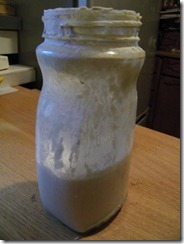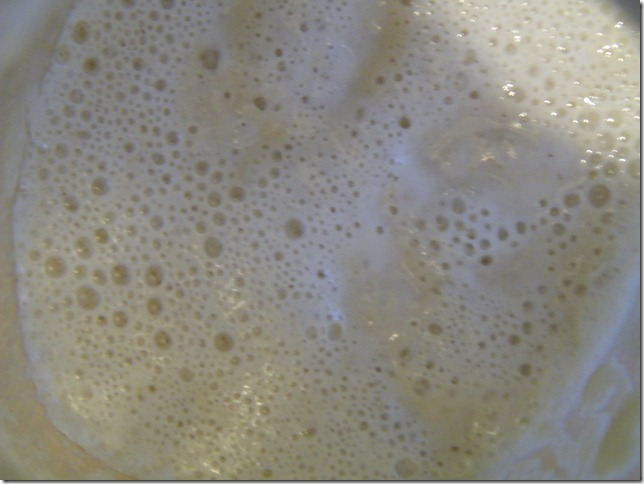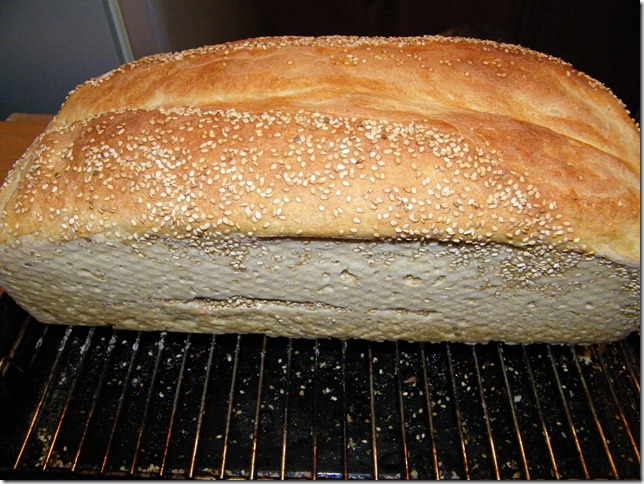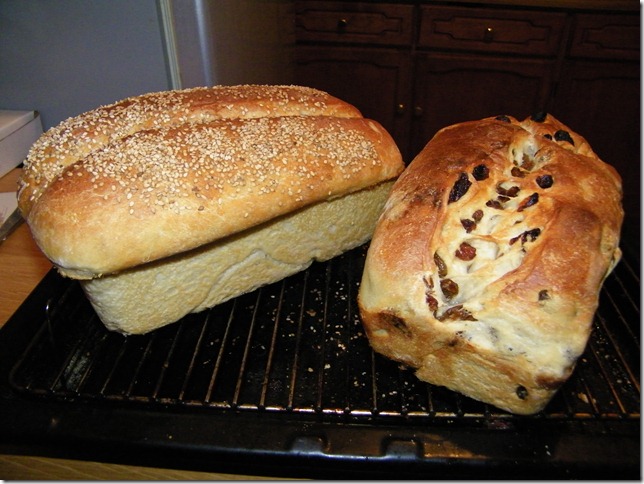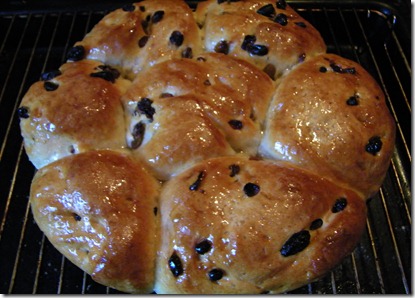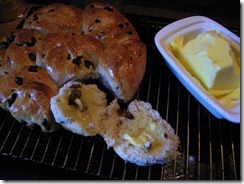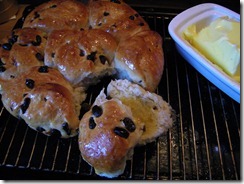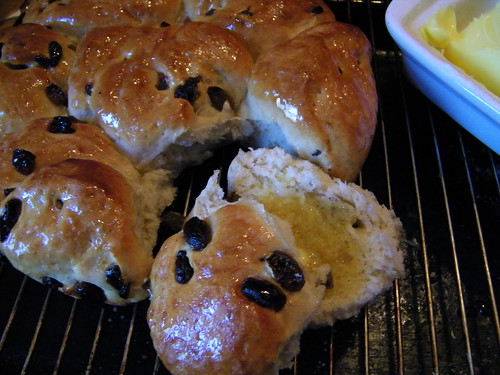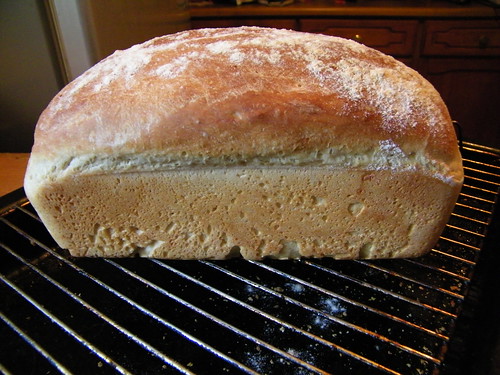Sourdough Bread is made with yeast ‘starter’ which uses the yeast that occurs naturally in the atmosphere and in the flour. Despite the time needed to ‘grow’ the starter, it is not a difficult bread to make, and leftover starter can continue to be ‘fed’ to make more sourdough loaves.
Starter Ingredients:
100 g Strong White Bread Flour (Type 550)
100 ml Tepid Water (cooled, boiled water)
1. For the Starter: Stir the flour and the water together in a bowl to make a sticky paste. Cover with a damp tea-towel (not cling film) and leave on the kitchen counter for 2 days, dampening the tea-towel again as needed to keep it moist. If after 2 days the mixture looks bubbly and has a milky smell, you can proceed to the first feed. ( It may take up to 4 days to reach this stage, mine took 3 days). If there are patches of mould or the paste smells sour or bad, throw it away and start again with a new batch of starter.
To ‘Feed’:
200 g – 300 g Strong White Bread Flour
2. To ‘feed’, stir in 100 g of flour and enough tepid water to make a soft, paste-like dough. Cover the bowl with a damp tea-towel again and leave as before for 24 hours. At this point the starter will look very active and bubbly. Stir well, then add 200 g of flour and enough tepid water to make a dough as before. Cover again and leave for 12 hours. If the starter looks very bubbly and lively, it is ready to use. If it seems only slightly bubbly, give it one more feed and wait for 6 hours.
Sourdough Bread Dough Ingredients: (makes 1 large loaf or 2 small loaves)
700 g Strong White Bread Flour (Type 550)
1 Table Spoon of Salt
2 Table Spoons of Sugar
400 ml Tepid Water (cooled, boiled water)
220 g of Sourdough Starter
Sourdough Bread:
1. For the dough; mix all the flour, salt and sugar in a large bowl.
2. Weigh out 220 g of sourdough starter and add 200 ml of tepid water to the starter, mix and stir well
3. Add the sourdough starter and water mix to the flour. Gradually work the liquid mix into the flour. Then add the remaining tepid water and mix to form a firm dough. You may need to add a little more water, if the dough feels too dry or crumbly or you may need to add a little more flour if the dough feels too sticky.
4.Turn the dough out onto a floured surface and knead hard for about 10 minutes. It should be smooth
5. Return the dough to the cleaned and greased bowl, cover with a damp tea-towel or lightly greased cling film and leave to rise in a warm place for 3-8 hours or until doubled in size. Rising time depends on the room temperature and on the strength of your starter. (A new starter will give a slow rise and less volume than one that is well established)
7. Turn out the risen dough onto a floured surface and knock it back with your knuckles to its original size.
8. Grease and dust (with flour) a large bread tin and shape the dough to fit the tin. Or you could divide the dough into halves and place it into 2 smaller bread tins. (At this stage I added sultanas to one of the small loaves and kneaded them into the dough to make a small sultana loaf. I left the other loaf plain). Leave the dough to rise in the tin and cover with a damp tea-towel or lightly greased cling film. After 2-6 hours it should have doubled in size.
9. Preheat the oven. Dust the risen dough with a little flour (optional) and place in the oven at 220 C (425 F, gas mark 7). Bake for about 30 minutes. Check after 15 minutes and turn down the heat if the loaves seems to brown too quickly.
10. After baking, transfer the bread to a wire rack and leave to cool.
(Large Sourdough Loaf, sprinkled with Sesame Seeds)
( 2 Small Sourdough Loaves; one sprinkled with Sesame Seeds and one baked with sultanas)
Leftover Sourdough Starter can be kept in an airtight container in the fridge. Although I prefer to keep a loose lid on my container because of the pressure building during fermentation. Before using it to make another loaf, bring it back to room temperature, then feed it once as in the main recipe and leave for about 6 hours. Each time you make a loaf, you will have leftover starter. This can be kept in the fridge, feeding it every 4 days to keep it alive and to improve in flavour.
Any starter you do not need or do not want, can be discarded or given to a friend. Sourdough starter can last for decades and seems to be resistant to contamination. This may be due to an antibiotic action, similar to that of moulds in cheeses such as Stilton or Roquefort.
